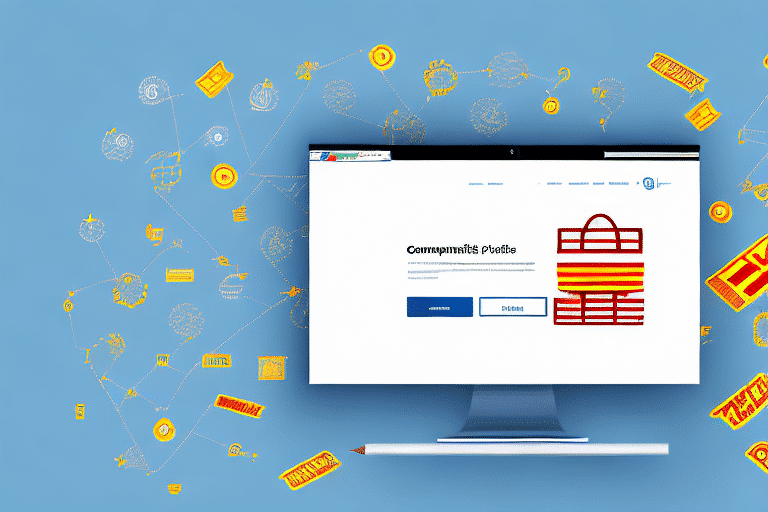Introduction to DHL eCommerce and FreshBooks Integration
In the competitive world of online selling, efficiently managing shipping and invoicing processes is crucial for business success. Integrating DHL eCommerce with FreshBooks offers a comprehensive solution that streamlines these operations, allowing you to focus on growing your business. This integration not only automates your logistics and financial tasks but also provides valuable insights to enhance your overall workflow.
Key Benefits of Integrating DHL eCommerce with FreshBooks
Enhanced Efficiency and Productivity
By combining DHL eCommerce's shipping solutions with FreshBooks' accounting capabilities, you create a seamless workflow that eliminates the need to toggle between different platforms. This integration reduces manual data entry, minimizes errors, and saves valuable time, allowing you to handle more orders with greater accuracy.
Real-Time Tracking and Monitoring
Gain real-time visibility into your shipments and invoices. DHL eCommerce provides comprehensive tracking for your packages, while FreshBooks offers an intuitive dashboard to monitor your financial transactions. This dual visibility ensures that you can promptly address any issues and keep both your operations and your customers informed.
Cost Savings and Discounted Rates
Leverage exclusive shipping discounts and bulk rates available through DHL eCommerce. When integrated with FreshBooks, these savings are automatically applied to your invoices, helping you reduce overall shipping costs and increase your profit margins.
Improved Customer Experience
Offering multiple shipping options and providing accurate delivery timelines enhances your customers' shopping experience. The integration allows you to customize shipping preferences based on order details, ensuring that customers receive their products promptly and reliably.
Step-by-Step Integration Guide
1. Sign Up for DHL eCommerce and FreshBooks Accounts
Begin by creating accounts on DHL eCommerce and FreshBooks. Ensure that both accounts are set up with accurate business information to facilitate seamless integration.
2. Access the FreshBooks App Store
Navigate to the FreshBooks app store and search for the DHL eCommerce integration. Select the app to begin the connection process.
3. Connect Your Accounts
Authorize FreshBooks to access your DHL eCommerce account by entering your DHL credentials. This step ensures that both platforms can communicate and share necessary data securely.
4. Configure Shipping Settings
Set up your shipping preferences within FreshBooks. Define package dimensions, weight, and destination criteria to automate the creation of shipping labels based on invoice details.
5. Generate Shipping Labels
Once your settings are configured, you can create and print shipping labels directly from FreshBooks. Attach these labels to your packages and schedule pickups or drop-offs with DHL eCommerce.
6. Monitor and Manage Shipments
Use FreshBooks' dashboard to track the status of your shipments in real-time. This integration allows you to manage invoices and shipping information from a central location, enhancing your operational oversight.
Automating Shipping and Invoicing Processes
Automated Shipping Label Generation
Save time by automatically generating shipping labels based on invoice data. FreshBooks uses the information from your invoices to create accurate shipping labels, reducing the need for manual input and minimizing errors.
Recurring Invoicing and Payments
Utilize FreshBooks' recurring invoicing feature to automate regular billing cycles. This ensures timely payments and maintains consistent cash flow without manual intervention.
Automated Payment Reminders
Set up automated payment reminders in FreshBooks to notify customers of upcoming or overdue payments. This feature helps in maintaining a healthy cash flow and reduces the time spent on chasing late payments.
Reducing Shipping Costs with the Integration
Access to Discounted Shipping Rates
Take advantage of DHL eCommerce's discounted shipping rates available exclusively to integrated users. These savings can significantly lower your shipping expenses, especially for high-volume orders.
Bulk Shipping Options
Utilize bulk shipping options to further reduce costs. By consolidating multiple shipments, you can achieve economies of scale, resulting in lower per-package shipping fees.
Optimized Shipping Routes
DHL eCommerce offers optimized routing options that ensure efficient delivery paths. This optimization not only speeds up delivery times but also reduces fuel and transportation costs.
Features of DHL eCommerce and FreshBooks Integration
Seamless Data Synchronization
The integration ensures that all shipping and invoicing data are synchronized in real-time. This seamless flow of information eliminates discrepancies and keeps your records accurate and up-to-date.
Comprehensive Reporting and Analytics
Gain access to detailed reports and analytics that provide insights into your shipping performance and financial health. Use this data to make informed decisions and identify areas for improvement.
Customizable Shipping Rules
Set up customizable shipping rules based on various criteria such as order value, destination, or shipping speed. This flexibility allows you to tailor your shipping strategy to meet specific business needs.
Case Study: Enhancing Business Efficiency with Integration
ABC Clothing, an online apparel retailer, integrated DHL eCommerce with FreshBooks to streamline their operations. By automating shipping label creation and invoice generation, ABC Clothing reduced manual processing time by 40%. Additionally, leveraging discounted shipping rates resulted in a 15% decrease in shipping costs, directly boosting their profit margins. The real-time tracking features also improved their customer satisfaction rates, as customers received timely updates on their orders.
According to a report by Statista, businesses that automate their shipping and invoicing processes can increase operational efficiency by up to 30%, highlighting the significant impact of integrating platforms like DHL eCommerce and FreshBooks.
Overcoming Common Challenges for Online Sellers
Manual Data Entry Errors
Manual entry of shipping and invoice data can lead to errors that disrupt operations. The integration automates these processes, ensuring accuracy and consistency across your records.
High Shipping Costs
Shipping expenses can erode profit margins. By accessing discounted rates and optimizing shipping methods through the integration, you can significantly reduce these costs.
Cash Flow Management
Managing cash flow is vital for sustaining business operations. FreshBooks' automated invoicing and payment reminders help maintain a steady cash flow, reducing the risk of financial shortfalls.
Conclusion
Integrating DHL eCommerce with FreshBooks offers a powerful solution for online sellers seeking to optimize their shipping and invoicing processes. This integration not only enhances efficiency and reduces costs but also provides valuable insights to drive business growth. By automating key operations and leveraging real-time data, you can streamline your workflow, improve customer satisfaction, and boost your overall profitability. Embrace this integration to take your online business to the next level and stay ahead in the competitive e-commerce landscape.






















